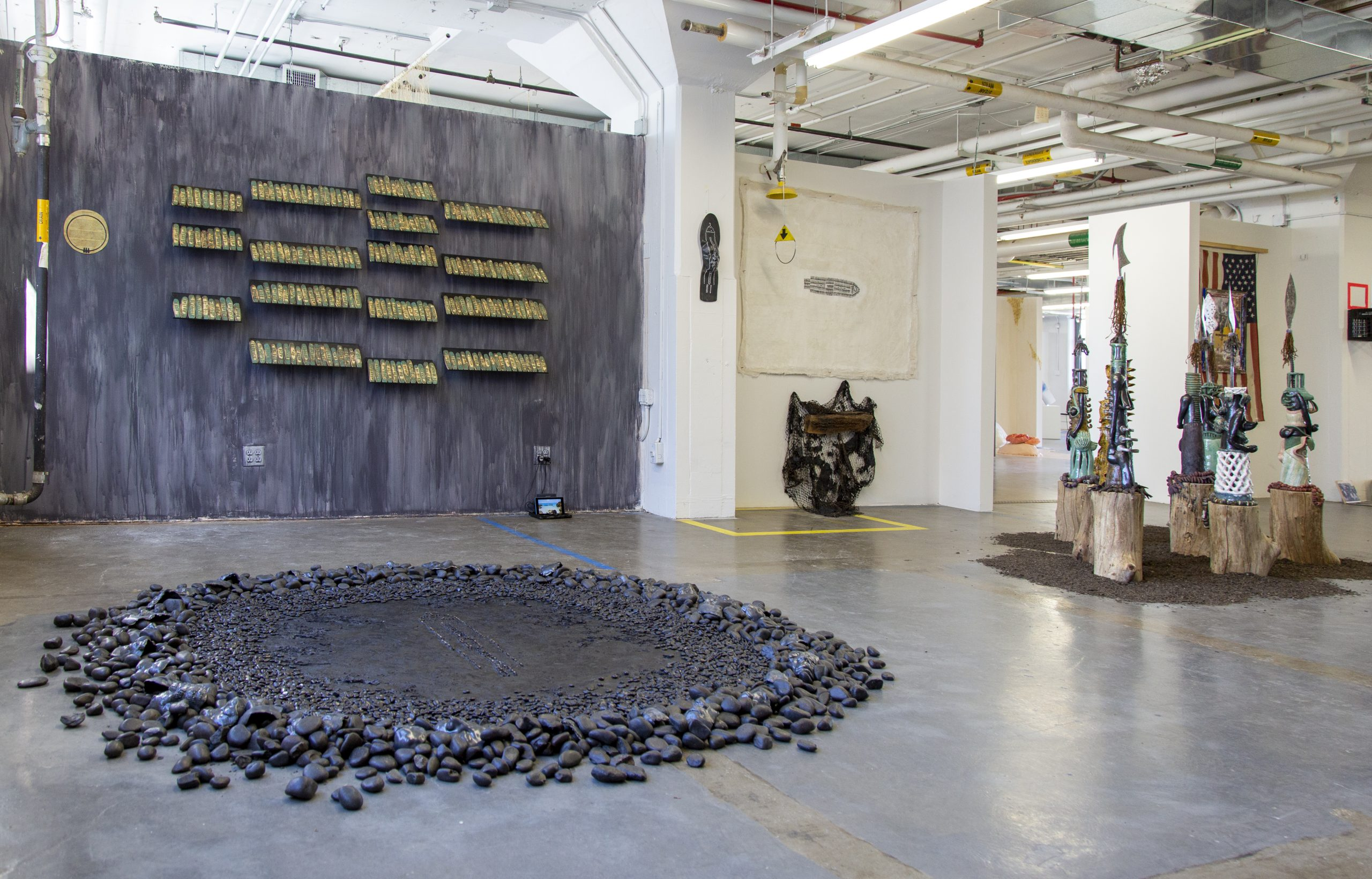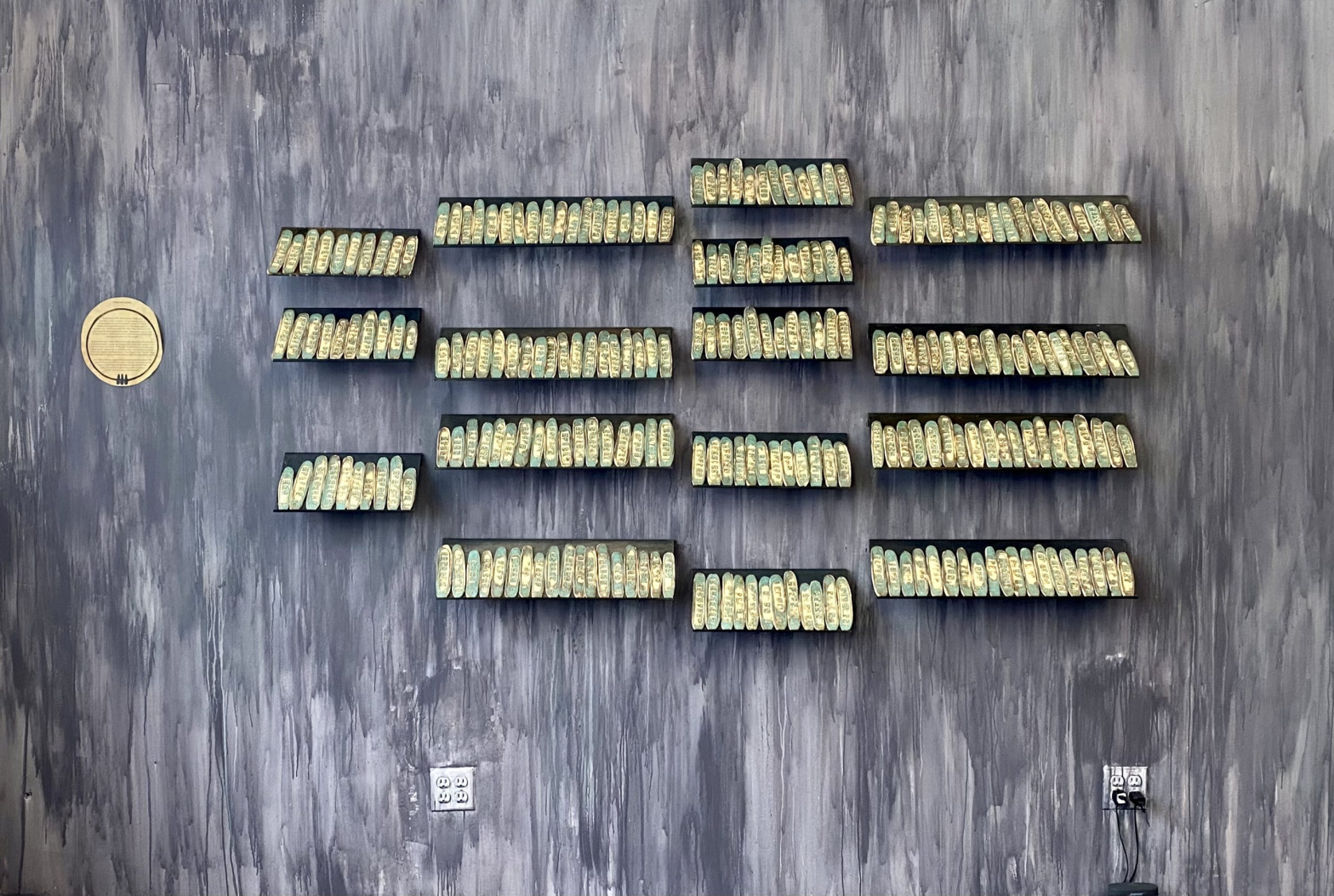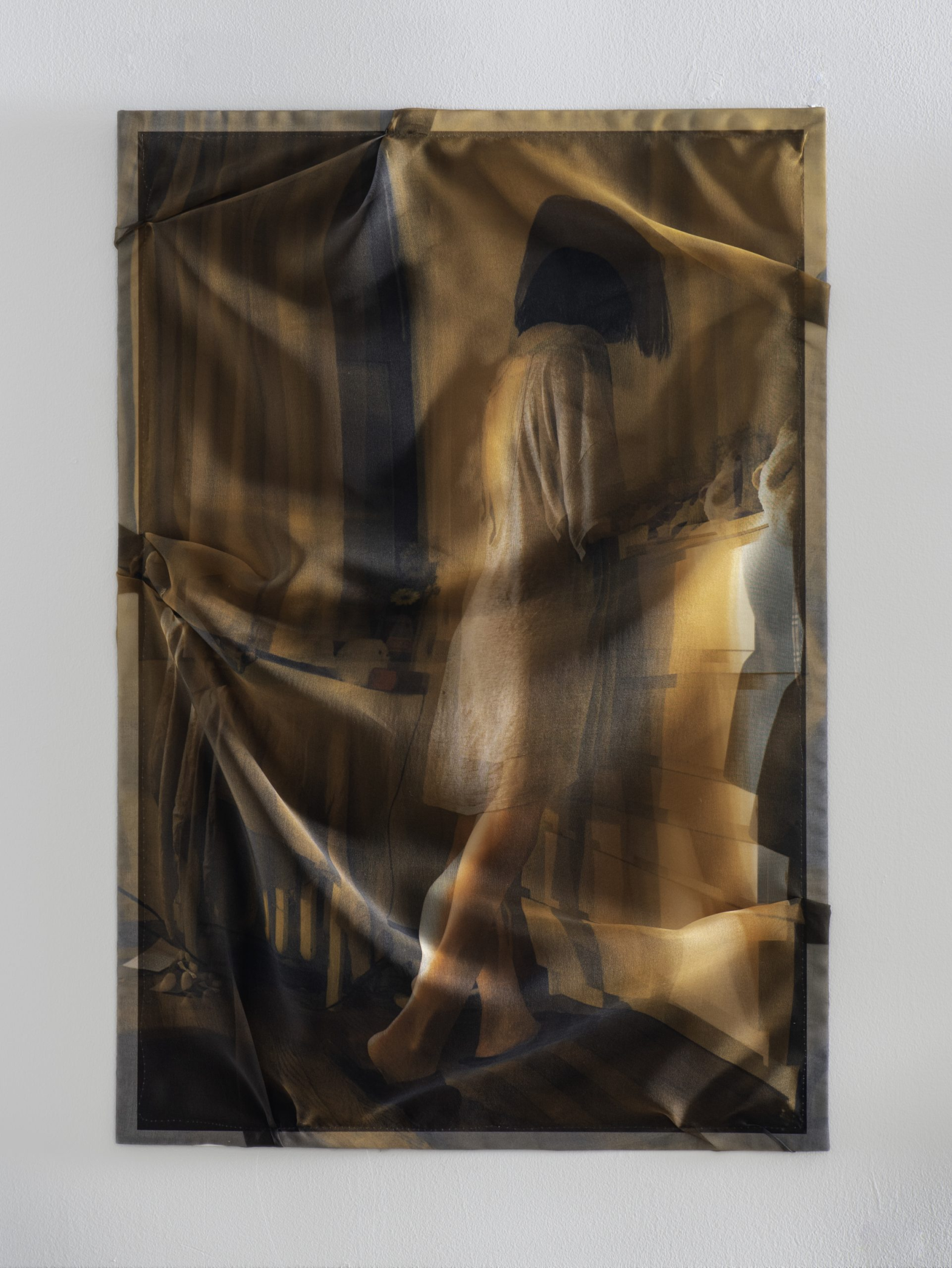Pratt’s MFA Thesis Exhibition features immersive presentations that transcend the parameters of traditional painting.

With COVID-19’s ongoing disruption of in-person learning, it’s been a tough two years for MFA students: classes shifted online, apartments became makeshift studios, and campus facilities became harder to access. At universities across the United States, making artwork required navigating terms and conditions that shifted almost weekly — “If I start project X today, will I have access to tools Y and Z in order to complete it a month from now?” became a common concern.
Not that anyone could tell this from Pratt Institute’s 2022 Fine Arts and Photography MFA Thesis Exhibition, a potent example of how artists have adapted in the face of instability. The exhibition, which features 32 graduating artists from both programs, showcases impressive talent in almost every medium, including painting, sculpture, video art, photography, and ceramics. Although Fine Arts and Photography are two separate graduate programs at Pratt — the Graduate Program in Photography was just established in 2019 — the exhibition stands as a cohesive whole, owing to the interdisciplinary approaches of both cohorts.

The work in the show mirrors recent trends in contemporary art, favoring an immersive presentation that transcends the rectangular parameters of traditional painting. Khaska Dottin’s street art-inspired installation, whose bold graffiti lettering spills from the canvas out across the gallery wall in multiple colors and directions, sets the exhibition’s tone at the entrance. Dottin’s work, and the overall show, refuse viewers the safe distance that the white-box museum aesthetic provides,
announcing that conventional signifiers of fine art are no longer sacred or necessary.
This message continues in the adjoining room, where Hiu Ching Leung has set up a makeshift pencil guillotine. Over 500 orange No. 2 pencils spill from inside a window, whose glass pane evokes the jaws of a machine that has chewed them to a pulp. The heap of wood shavings on the floor speaks to systemic destruction and censorship; Leung, who is from Hong Kong, alludes to the current political injustices taking place there.

Much of the work in the show makes reference to politics and global struggles for equality. Kirsten Batten-Leach, who worked at the Henry Street Settlement food pantry during the pandemic, received hundreds of boxes of food for the pantry, each containing a letter signed with a flourish by then-president Donald Trump. The pantry collectively decided to remove these letters, and Batten-Leach encased 45 of them in individual, low-relief sugar castings. The piece — cleverly titled “Sugar Daddy”— oozes off the wall in places, giving lie to the myth of government as a benevolent protector. A dripping, pungent-smelling chair coated with what appears to be real Velveeta and live mold, next to “Sugar Daddy” is not to be missed. A gold plaque on the bottom reads: “Government Cheese.”
Justice-Michelle Thomas’s impressive, haunting installation tells the story of the Zong massacre, the 1781 mass murder of over 130 enslaved Africans who were thrown overboard so that William Gregson’s slave-trading syndicate could claim “property loss” on its insurance. Thomas constructs a ceramic Shen for each person killed, stamping their name in Braille on the oval-shaped tiles to “connect further with the silence of their tragedy.” (The Shen, which is shaped like a circle of rope tied in a knot, is an ancient Egyptian protective symbol.) The exquisitely crafted installation also includes broken masks — strongly evoking death masks — arranged among dark stones, which encircle the abstracted shape of the Zong.

Other bodies of work tell personal stories, like SuJung Jo’s hallucinatory photo series. Images of sleepers printed on organza hang from the ceiling like phantoms, presenting an ever-changing vision that doubles and overlaps depending on one’s position in relation to the object. The works mounted to the wall create something akin to a lenticular printing effect, as the silhouette of a young woman in her bedroom appears to move along the gentle folds of the fabric. Photographic works in the exhibition are never purely two-dimensional: Kelvin Tse’s image-sculptures integrate archival photos of his family abstracted into fields of pixels, then sliced and reassembled into geometric sculptures that evoke the work of Letha Wilson.
Another recurring theme is the human body rendered alien and unfamiliar. Rebecca Jean Sutton’s soft pubic sculptures distort the genital form, while staying just recognizable enough to hit rock bottom in the uncanny valley. The giant pieces exude mystery liquids, as well as hair and eggshells, as they project a raw body horror.
Nazli Efe creates a similarly immersive installation two rooms down. Sculptures that resemble extracted human flesh and bags of IV fluid cling to the gallery wall, bubbling out into two rectangular vats filled with tubes and black and white images — oddly reminiscent of the plastic tubs in a darkroom. Bits and pieces of memory, as hinted at in the photographs, stick like dissected residue to the sterile hospital equipment. It is a moving scene, particularly in the context of the current pandemic.
While not every artist’s work can be described in detail here, each deserves mention: Junoh Ahn, Ty Allen, Daliah Ammar, Taylor Bielecki, Jack Byers, Camilla Gale, Elle Gillette, Katharina Kiefert, Oidie Kuijpers, Jaybe Lee, Elliot Lovegrove, Troy Medinis, Samantha Morris, Debo Mouloudji, Kristina Naso, Seyhr Qayum, Madeleine Riande, Rob Redding, Omar E. Saad, Xiangni Song, Noah Tavlin, Amy Ungricht, Yu-Ching Wang, and Yuning Xu all presented impressive, well-developed bodies of work. It would not take a great leap to imagine the same show at the New Museum or the Palais de Tokyo in Paris, rather than at 630 Flushing Avenue in Brooklyn, where it currently resides.
Pratt Institute’s Fine Arts and Photography MFA 2022 Thesis Exhibitionc ontinues at the Pfizer Building (630 Flushing Avenue, South Williamsburg, Brooklyn) through May 6. The exhibition was curated by a committee of faculty thesis advisors.
Source article published in Hyperallergic.com on April 27, 2022. Written by Julia Curl.
